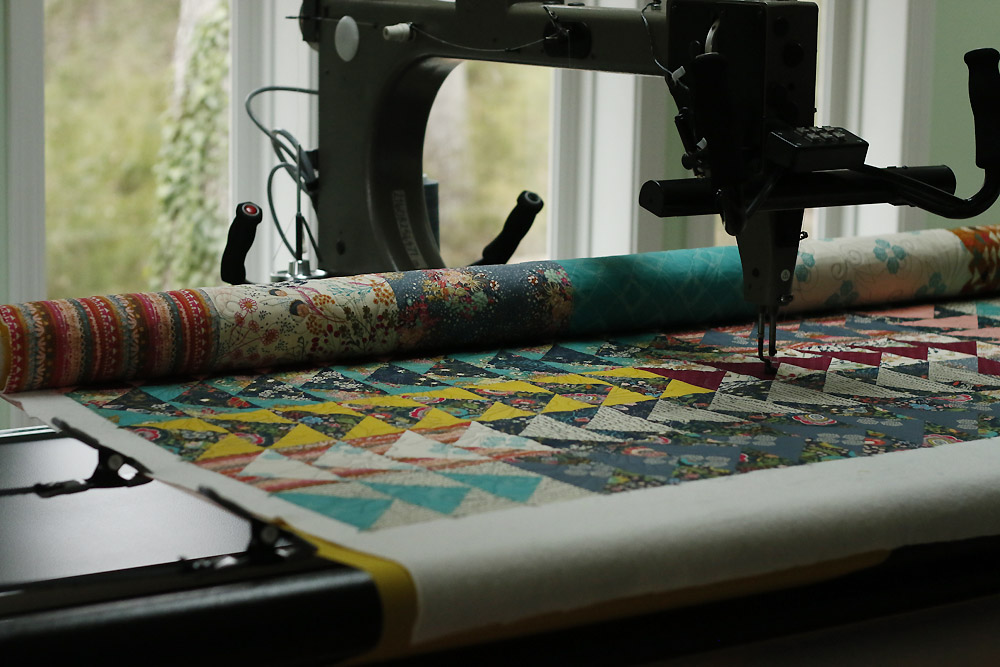how to Prep Your Quilt Top for Longarm Quilting
A very large quilt can be quite a chore to quilt at home. Are you considering sending your big bed quilt in for professional quilting service? Let's get it ready for longarm quilting. Different quilters may have slightly different expectations, but these are the basics.
Here's how to prepare your quilt for professional quilting.
Don't Baste
That's right, you get to skip basting! Send your quilt top and backing to the quilter without attaching them in any way. You'll also need to send batting, unless batting is included in your service. No need to even open the batting package!
Inspect Quilt Top
Give your quilt top a thorough inspection If there are stains, let your quilter know that you are aware of them. Trim away loose threads, which can get caught in the quilting becoming more difficult to remove. Check that seams are well-pressed to prevent them from rolling unattractively during the basting or quilting process.
Are the edges of your quilt top straight? If you improv-pieced the work you might have jagged patchwork edges. Trim all four sides of the quilt straight so that it can be loaded properly on the longarm sewing machine. Square is even better, but straight will usually do!
Oversize Backing
Most longarm quilters require a backing that is 8-10" larger than the quilt top both in width and height. For example, a 60" quilt top requires an 68" square backing. This 4-5" of excess backing all the way around the quilt allows the longarm sewing machine to "hold onto" the quilt while it sews. For more details on why this is necessary and a tutorial on how to enlarge your backing, see this post.
Send a Flat Backing
Most quilt tops aren't perfectly flat and square. That's ok! Hopefully your quilter is eager to do his or her best by your project without judgement. To make the quilter's job easier, send a flat backing. Juggling fullness in the backing and the quilt top all at once is tricky and can lead to tucks.
Consider sending a wide back fabric for your backing. It's easy to load and allows the quilter to focus on the quilt top. If you compare cost for backing with 42" wide fabric vs. 108" wide fabric, the wide backs are generally cheaper too!
If you choose to piece backing, take time to sew those long seams carefully. Cut yardage straight and square before joining segments. Most importantly, use pins and/or a walking foot to help achieve an even feed.
Sewing a long seam without any pinning or walking foot assistance tends to result in a seam that looks fine, but actually has more fullness on one side of the seam than the other. When such a backing is loaded onto a longarm sewing machine, the full side sags down even while the other side is pulled tight. It's difficult for the quilter to compensate without stressing the already-tight fabric.
Have Questions?
Just ask! Your quilter should be happy to help. After all, you both have the same goal - a beautifully finished quilt! Educating quilters is always preferred to troubleshooting problems in the quilting studio. We're all learning all the time. Don't be shy about asking for help.
This post is part of a series: the Big Bed Quilt-Along. We're sewing along February - April 2018, but you can use the resources anytime to help you make a large quilt. Use hashtag #BigBedQAL to share your progress!













